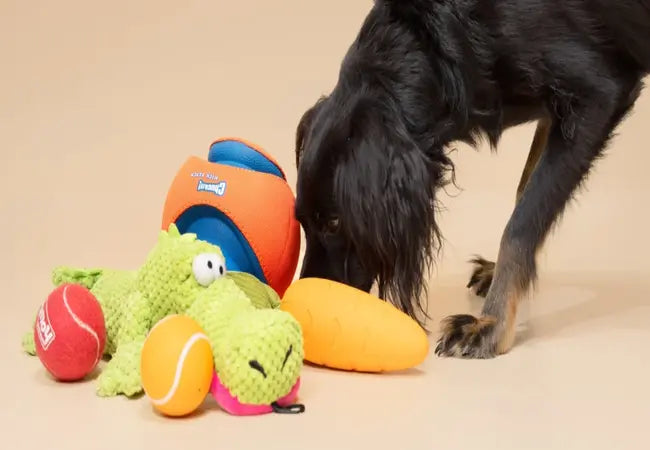In this article
Vet Guide to Famotidine in 2025 🐾
Hi, I’m **Dr Duncan Houston, BVSc**, founder of Ask A Vet. This comprehensive 2025 guide explores **famotidine** (commonly known as Pepcid®), an H₂-receptor antagonist widely used in dogs and cats to treat and prevent gastric ulcers, reflux esophagitis, gastritis, and gastritis. This article covers mechanisms, dosing, side-effects, precautions, and monitoring strategies to ensure your pet's comfort and safety. 💊🐶🐱
📘 What Is Famotidine?
Famotidine is an H₂-receptor antagonist that reduces gastric acid secretion by blocking histamine at parietal cells. It’s used to treat ulcers, gastroesophageal reflux, gastritis, and esophagitis in dogs and cats :contentReference[oaicite:3]{index=3}.
✅ Approved & Common Uses
- Treatment/prevention of stomach and intestinal ulcers :contentReference[oaicite:4]{index=4}.
- Used for esophagitis, reflux, gastritis, megaesophagus, parvovirus-related GI upset :contentReference[oaicite:5]{index=5}.
- Often prescribed when pets are on NSAIDs or other ulcer-causing medications :contentReference[oaicite:6]{index=6}.
📐 Dosing & Administration
🐶 Dogs
- Standard dose: 0.5–1 mg/kg (0.25–0.5 mg/lb) orally every 12–24 hours, typically given before first meal :contentReference[oaicite:7]{index=7}.
- Likely safe to administer with small snack if empty-stomach approach causes vomiting :contentReference[oaicite:8]{index=8}.
🐱 Cats
- 0.5 mg/kg (≈5 mg per cat) every 12–24 hours—adjust to every 24 h if they have kidney or heart disease :contentReference[oaicite:9]{index=9}.
- Give 30 minutes before meals; if GI upset occurs, can be given with food :contentReference[oaicite:10]{index=10}.
Forms Available
- Over-the-counter tablets (10 mg, 20 mg, 40 mg) and prescription oral liquid; injectable forms exist for hospital use :contentReference[oaicite:11]{index=11}.
⏱ Mechanism & Onset
Famotidine reduces stomach acid by blocking H₂ receptors, raising gastric pH. It begins working within 1–2 hours, lasting 9–24 hours depending on species and health status :contentReference[oaicite:12]{index=12}.
⚠️ Side‑Effects & Overdose Signs
- Common (mild): occasional vomiting, diarrhea, inappetence, dry mouth, constipation :contentReference[oaicite:13]{index=13}.
- Rare serious: bradycardia (with IV use), mental changes in older pets, agranulocytosis :contentReference[oaicite:14]{index=14}.
- Overdose may cause: vomiting, pale gums, rapid heart rate, collapse—seek vet/poison control :contentReference[oaicite:15]{index=15}.
🚫 Contraindications & Precautions
- No use if pet has known famotidine allergy or ranitidine allergy :contentReference[oaicite:16]{index=16}.
- Use with caution or adjust dose in geriatric pets and those with kidney, liver, or heart disease :contentReference[oaicite:17]{index=17}.
- Avoid injectable forms administered too fast—they can trigger arrhythmias or vomiting :contentReference[oaicite:18]{index=18}.
🔗 Drug Interactions
- Famotidine can reduce absorption of antacids, ketoconazole, cefpodoxime, cefuroxime, metoclopramide, sucralfate, digoxin, iron salts—separate by at least 2 hours :contentReference[oaicite:19]{index=19}.
- Has fewer drug interactions than cimetidine—does not significantly inhibit CYP450 :contentReference[oaicite:20]{index=20}.
🩺 Monitoring & Veterinary Follow‑Up
- No routine lab monitoring is required, but can be considered for long-term use in pets with underlying disease :contentReference[oaicite:21]{index=21}.
- Watch for persistent GI signs or appetite loss—call your vet if concerns arise :contentReference[oaicite:22]{index=22}.
🏡 Real‑World Scenarios
🐶 Dog with NSAID-associated gastritis
- 20 kg dog received 10 mg famotidine before an NSAID dose; vomiting stopped within 2 days, appetite returned.
🐱 Cat with recurrent bile vomiting
- Cat dosed 5 mg famotidine 30 min before breakfast—bile vomiting resolved within a week; drug occasionally paused without relapse.
❓ FAQs
Can I give my pet famotidine every day?
Yes—short-term use is common for weeks. Long-term use should involve vet evaluation :contentReference[oaicite:23]{index=23}.
What if I miss a dose?
Give as soon as remembered on same day, or skip if near next dose. Never double up :contentReference[oaicite:24]{index=24}.
Is famotidine safe with food?
It works best on an empty stomach. If given with food, its effect may be reduced—but can help if it upsets the stomach :contentReference[oaicite:25]{index=25}.
Long-term or switching to PPI?
Long-term H₂ antagonists may become less effective in cats; consider pantoprazole or omeprazole as alternatives :contentReference[oaicite:26]{index=26}.
📌 Final Takeaways
- Famotidine is a safe and effective option for managing stomach acid-related conditions in dogs and cats.
- Typical doses: dogs 0.5–1 mg/kg every 12–24 h; cats ~0.5 mg/kg every 12–24 h, adjusting for health needs.
- Best taken before meals; mild GI effects possible—rare serious events.
- Watch for drug interactions; space dosing accordingly.
- Use short-term as directed; long-term use should involve vet check-ins and potential alternative therapies for chronic cases. 🐾❤️
Considering famotidine for your pet? Download the Ask A Vet app for dosing reminders, side-effect tracking, meal-based alerts, and 24/7 veterinary support—helping your pet feel their best in 2025. 🐶🐱






